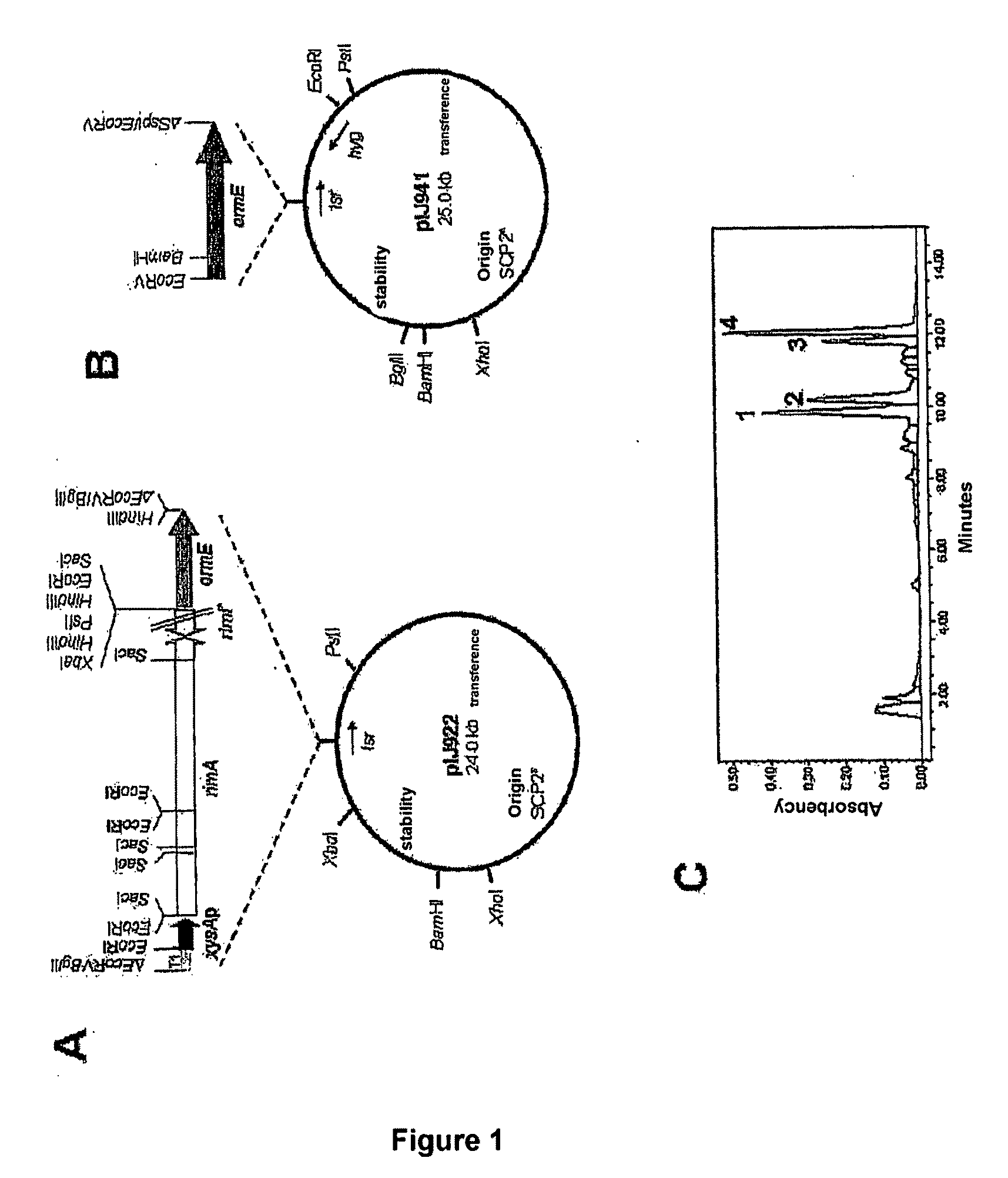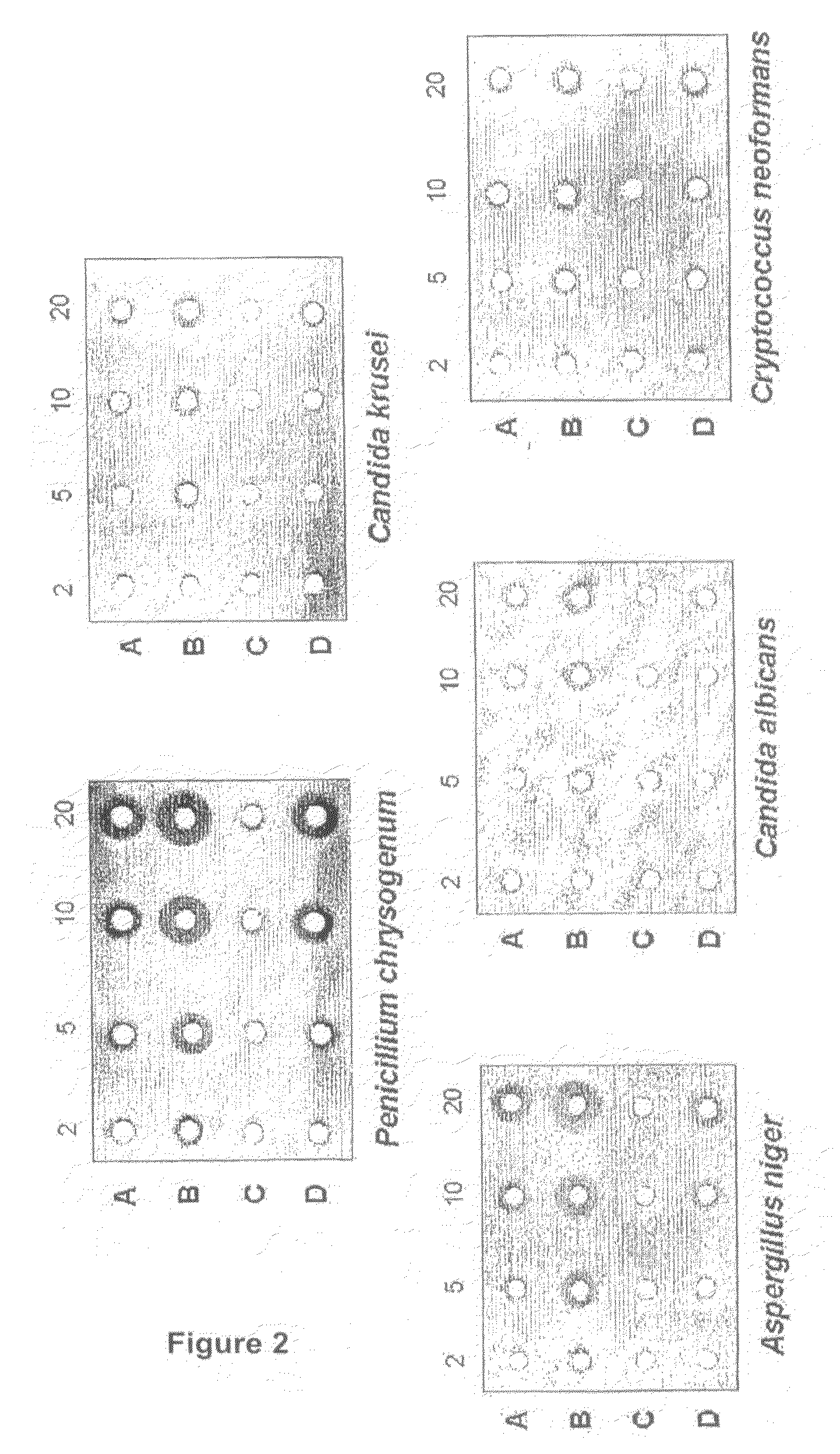Polyene Antibiotics, Compositions Containing Said Antibiotics, Method and Micro-Organisms Used to Obtain Same and Applications Thereof
a polyene antibiotic and polyene technology, applied in the field of amidated and methylated polyenes, can solve the problems of destroying the electrochemical gradient, reducing the number of pharmaceutical products on the market for treating systemic infections, and resulting cell death, so as to prevent polar effects and clear pharmacological advantages
- Summary
- Abstract
- Description
- Claims
- Application Information
AI Technical Summary
Benefits of technology
Problems solved by technology
Method used
Image
Examples
examples of embodiment
Example 1
Production and Characterisation of Rimocidin B (I-1a) and CE-108B (I-1b)
Bacterial Strains and Growth Conditions
[0178]The bacterial strains and plasmids are shown in Table 1.
[0179]Streptomyces diastaticus var. 108 and its derivatives by genetic modification were grown in the routine way in liquid and solid medium SYM2 (Atlas R. M., Microbiological Media. CRC Press, Boca Raton, Fla.) for the analysis of the production of tetraenes, and in liquid medium TSB (Oxoid) for the extraction of plasmids and total DNA.
[0180]Streptomyces lividans TK21 was used as general host for cloning and was grown in a solid medium R5 and in liquid medium YEME as described in field manuals (Kieser T et al., 2000, Practical Streptomyces Genetics, Norwich).
[0181]The strains of E. coli were grown in Luria-Bertani (LB) agar or in LB cultures as described in the specialised literature (Maniatis T. et al., 1982, Molecular Cloning, A Laboratory Manual, Cold Spring Harbor Press, Cold ...
example 2
Production and Characterisation of Rimocidin C (IIIa) and CE-108C (IIIb)
Bacterial Strains, Cloning Vectors and Growth Conditions
[0205]The bacterial strains and the plasmids are shown in Table 1.
[0206]Streptomyces diastaticus var. 108 and its derivatives were cultivated in medium SYM2 (Atlas R. M., Microbiological Media. CRC Press, Boca Raton, Fla.). Streptomyces lividans TK21 was used for the propagation of phages and as host strain, and was grown in solid medium R5 and in liquid medium YEME as described in field manuals (Kieser T et al., 2000, Practical Streptomyces Genetics, Norwich).
[0207]The strain E. coli JM101 was grown in Luria-Bertani (LB) agar or in LB culture as described in the specialised literature (Maniatis T. et al., 1982, Molecular Cloning, A Laboratory Manual, Cold Spring Harbor Press, Cold Spring Harbor N.Y.).
[0208]Penicillium chysogenum ATCC10003 was used for testing the antifungal activity and was grown in MPDA medium (composition: 2% malt ...
PUM
| Property | Measurement | Unit |
|---|---|---|
| Electric charge | aaaaa | aaaaa |
| Digital information | aaaaa | aaaaa |
| Volume | aaaaa | aaaaa |
Abstract
Description
Claims
Application Information
 Login to View More
Login to View More - R&D
- Intellectual Property
- Life Sciences
- Materials
- Tech Scout
- Unparalleled Data Quality
- Higher Quality Content
- 60% Fewer Hallucinations
Browse by: Latest US Patents, China's latest patents, Technical Efficacy Thesaurus, Application Domain, Technology Topic, Popular Technical Reports.
© 2025 PatSnap. All rights reserved.Legal|Privacy policy|Modern Slavery Act Transparency Statement|Sitemap|About US| Contact US: help@patsnap.com



